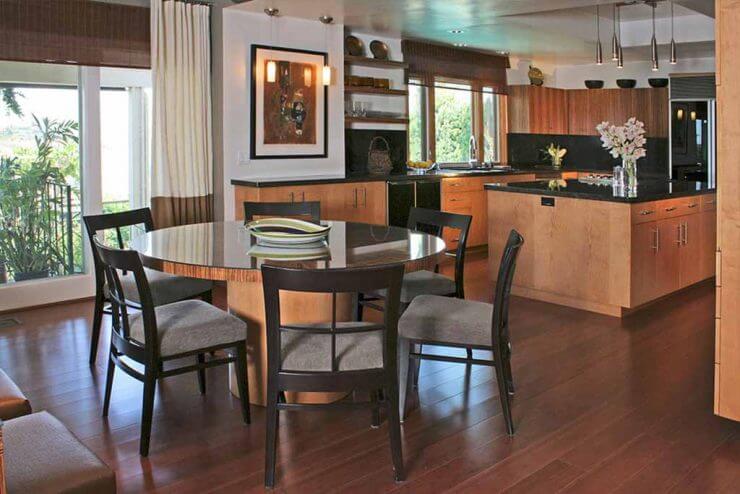The layout of your restaurant can have quite a strong impact on the experience of your customers. Some opt for an almost martial approach in this regard, preferring to arrange their furniture through Spartan concepts like efficiency and functionality. Now, we are all for efficiency and functionality in restaurant design, but we are also of the opinion that there should be a lot more to it than just that. However, extending your furniture layout for your restaurant beyond functionality does not automatically mean opting for a more aesthetic outlook with shrubs and other plants on such matters.
Rather, it means that you should broaden your horizons to start considering the deeper meaning of your layout. For example, have you ever thought of using Feng Shui to arrange your restaurant chairs? Feng Shui is an ancient practice and it is often used by people who don’t know all that much about interior design and want an easy way to implement it. Using it in a professional setting such as your restaurant makes a lot of sense though, especially when you notice the impact it can have on the various diners that would enter your establishment looking for a meal.
Perhaps the most fundamental aspect of using Feng Shui to figure out the arrangement of chairs in your restaurant is the fact that the door should not have any obstacles in front of it. Oftentimes a restaurant owner might place a podium in front of the entrance. A waiter or the maître d’hotel would likely be standing behind this podium so that they can greet customers. While this is something that can help you out quite a lot by enabling you to give customers a good experience from the moment they set their foot in the door, it will interrupt the flow of qi in your restaurant and so is unsuitable for design philosophies like Feng Shui.
Instead of a podium with a waiter who might greet your guests, you would be far better off leaving the doorway open. You would be surprised at how welcoming this would appear to be to the various people that are considering dining at your establishment. They would get the impression that your restaurant is an open space, and they would likely be able to glimpse your chairs and other furniture deeper into the recesses of your eatery. Hence, they would be enticed into entering and seeing what the interior of your restaurant has to offer.
This is one of the primary advantages of using Feng Shui when arraying the chairs and tables that your patrons are going to be using when they are in your place of business. Obstructions often have a psychological impact that can be relatively hard to account for. People would be unable to see the beauty of how your restaurant has been laid out inside, and this would remove a lot of the curiosity that is essential to drawing in walk-in customers and showing them a good enough time.
Feng Shui can also help you to decide what the color of your furniture should be like whether to buy a red couch or a brown couch. Most restaurant owners tend to go for wood tones, and others might opt for grey or black if they prefer a more modern look for their eatery which might just border on industrial. While these colors will work perfectly fine in a lot of different settings, many might also find them to be relatively limiting. One reason for that might be that you can’t really create a colorful experience in your restaurant if you can only choose between these rather dull tones.
The great thing about using Feng Shui to decide on furniture color is that it has the potential to broaden your horizons in a lot of ways. Green is often a very popular color when you look at it in the context of Feng Shui. It tends to bring out a lot of positive energy which is great for getting your customers into a relatively good mood. Using green shades in the furniture of your restaurant will create a vibe that would make your customers want to stay for much longer periods of time than might have been the case otherwise.
You can also use Feng Shui to try and embrace all of the elemental colors that you would need to create balanced look in your place of business. Fire, water, air and earth are the four fundamental elements, and using these to influence your furniture choices would generally be a very sound decision for you. Many people often assume that using Feng Shui to decide what furniture you should be using is a very old school method that is incompatible with modernity, but we are of the opinion that this is categorically incorrect.
Feng Shui can be very modern, it’s all a matter of how you use it. It goes beyond color and tells you how to create a warm atmosphere in your restaurant through the smart outlays that it can bring you to. Much of Feng Shui simply reawakens logic that you might have suppressed without realizing it. It’s not a prescriptivist set of rules that define what you can or can’t do. Rather, it is a way of describing tried and tested methods of arranging furniture, whether in the home or at a restaurant, that have ended up working in the past.
Another thing that makes the use of Feng Shui in your furniture choices for your restaurant is the fact that it is so versatile. That means that you can incorporate it into any and all methodologies that you feel are necessary in order to help you get your restaurant looking good. Combining Feng Shui with other design philosophies can end up paying off quite handsomely for you when you are faced with the rather difficult task of choosing furniture for your eaters to dine on.

